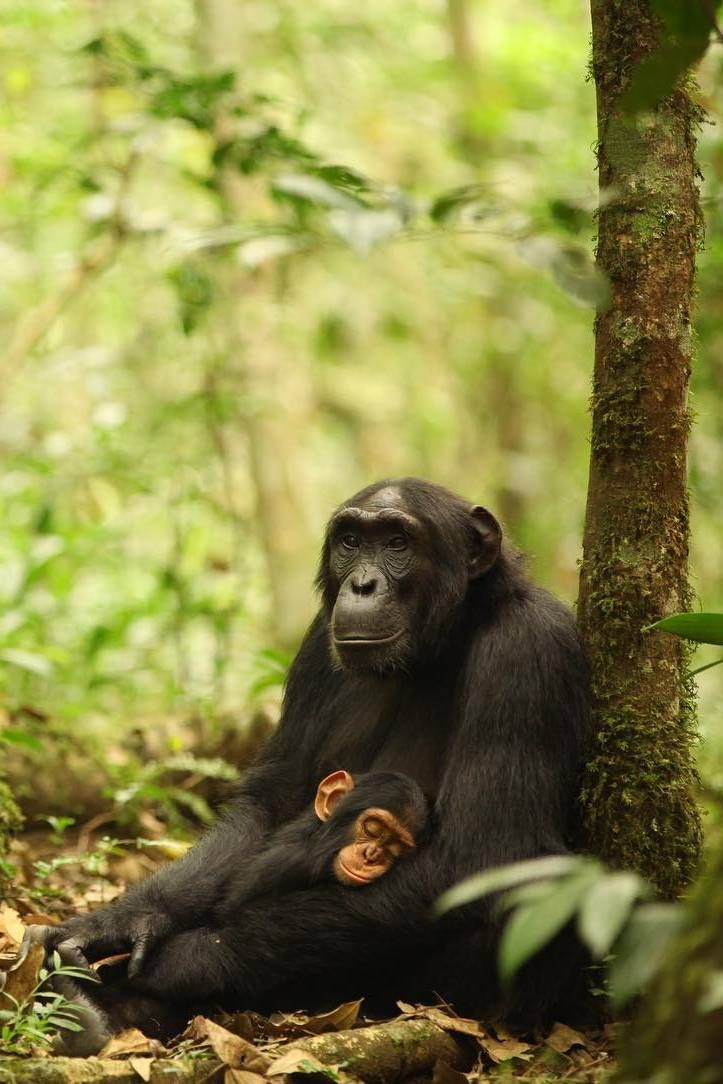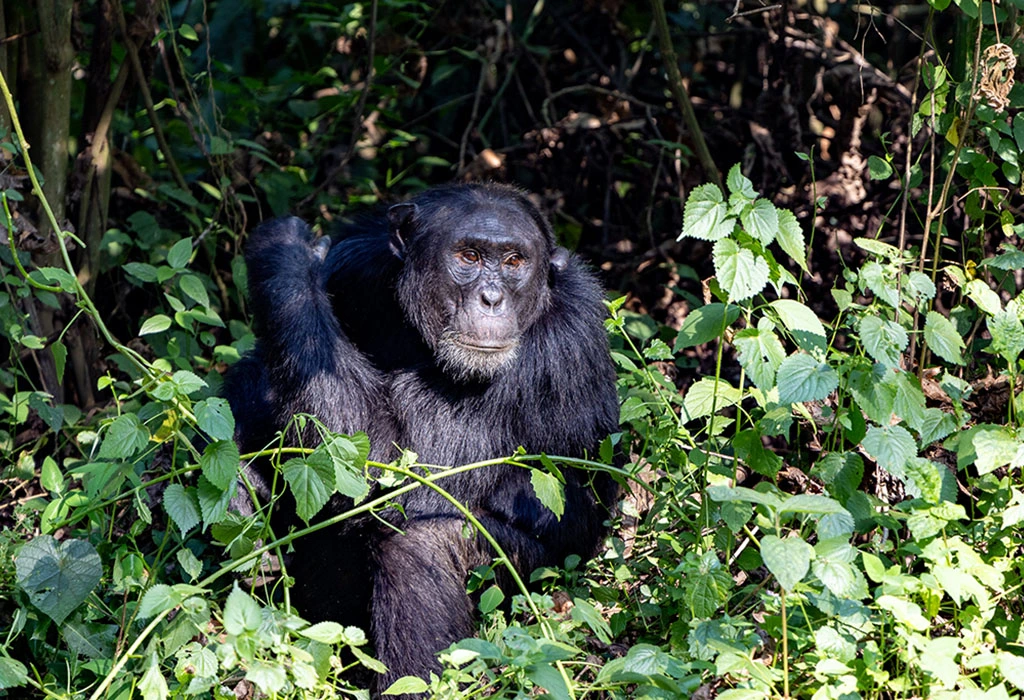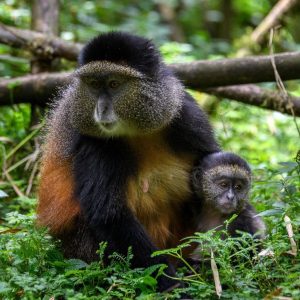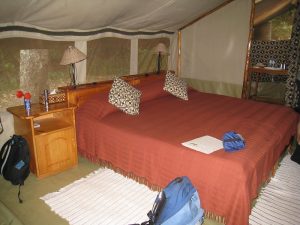What is Chimpanzee Trekking?
Chimpanzee trekking is an exciting and transformative experience that allows you to see one of our closest relatives in the wild. Imagine walking through dense forests, the sounds of nature around you, and encountering chimpanzees in their natural habitat—alive, curious, and full of character. This unique activity is quickly becoming one of the top wildlife experiences for adventure seekers, nature lovers, and conservation enthusiasts. But what exactly is chimpanzee trekking, and why is it so popular?
In this post, we’ll dive into what chimpanzee trekking is, where you can do it, why it’s such a great experience, and what to expect when you embark on this adventure.

What is Chimpanzee Trekking?
Chimpanzee trekking is the activity of tracking and observing wild chimpanzees in their natural habitat, typically in protected national parks or forest reserves. Unlike zoos or sanctuaries, this type of trekking allows you to see chimpanzees living freely in the wild, behaving naturally in their social groups.
Trekking usually involves guided walks through forests or dense jungles, where a trained guide helps you track the chimps based on their movements and nesting sites. During the trek, visitors are given a rare opportunity to observe these intelligent animals interacting with each other, foraging for food, playing, and sometimes even communicating with their complex vocalizations and gestures.
Chimpanzee trekking is more than just a wildlife experience—it’s an immersive adventure that combines a hike through pristine nature with a deep connection to one of the most fascinating creatures on Earth.
Why is Chimpanzee Trekking So Popular?
What Makes Chimpanzee Trekking Unique?
What draws so many people to chimpanzee trekking is the chance to interact with animals that share over 98% of their DNA with humans. Chimpanzees are incredibly intelligent and social creatures. Watching them interact with one another and their environment offers insights into their complex social structures, communication styles, and emotions that are strikingly similar to ours.
Educational and Conservation Benefits
In addition to the thrill of seeing these animals up close, chimpanzee trekking has significant educational and conservation value. Many of the locations where trekking takes place are in areas dedicated to protecting chimpanzees from threats like poaching, habitat loss, and human-wildlife conflict.
By participating in chimpanzee trekking, visitors are contributing directly to the conservation of these endangered species. Fees from trekking permits and tourism help fund important conservation programs, such as habitat restoration and anti-poaching efforts, while also supporting local communities who depend on the park for employment and income.
A Connection with Nature
For nature enthusiasts, chimpanzee trekking offers an unparalleled opportunity to connect with nature. The trek takes you through lush forests, where you may encounter other wildlife like monkeys, elephants, and various bird species. The experience provides a deeper appreciation for the environment and the importance of preserving these habitats for future generations.
Where Can You Go Chimpanzee Trekking?</h4>
What Are the Best Destinations for Chimpanzee Trekking?
Chimpanzee trekking is primarily found in a few African countries, where the population of wild chimpanzees is still significant. Let’s explore the best destinations for chimpanzee trekking:
-
Kibale National Park, Uganda: The Primate Capital of the World
Kibale National Park is one of the most famous chimpanzee trekking destinations in Africa. Located in western Uganda, this park is home to a high concentration of chimpanzees—over 1,500 individuals live in the park’s tropical rainforests. Kibale is known as the “Primate Capital of the World” because it not only has chimpanzees but also a diverse array of other primates, including baboons, colobus monkeys, and red-tailed monkeys.
-
Gombe Stream National Park, Tanzania: The Legacy of Jane Goodall
If you want to follow in the footsteps of primate researcher Jane Goodall, Gombe Stream National Park in Tanzania is the place to go. Gombe is famous for Goodall’s groundbreaking research on chimpanzee behavior. With its dense forests along the shores of Lake Tanganyika, this park is home to a population of wild chimpanzees that you can observe in their natural environment.
-
Nyungwe National Park, Rwanda
Though Rwanda is more famous for its gorilla trekking, Nyungwe National Park also offers an exciting opportunity to trek with chimpanzees. Located in the southwest of the country, this park is a haven for biodiversity, with over 300 bird species and several primate species, including chimpanzees. Trekking here is a great way to experience the dense rainforests and enjoy a quiet, less crowded trekking experience.
<ol start=”4″>
- <h
4>Mahale Mountains National Park, Tanzania
Located on the shores of Lake Tanganyika, Mahale Mountains National Park is another top spot for chimpanzee trekking in Tanzania. This remote park is home to one of the most beautiful and untouched rainforests in Africa, where you can track wild chimpanzees and enjoy stunning views of the lake. Mahale’s chimps are famous for their peaceful demeanor and the incredible opportunity to observe them in their natural habitat.
What to Expect During a Chimpanzee Trek?
How Long Does a Chimpanzee Trek Take?
Chimpanzee trekking usually takes between 2 to 4 hours, depending on the location and where the chimps are found. The trek starts early in the morning and may involve hiking through dense forests, so it’s important to be physically prepared for a moderately challenging walk.
Will You See Chimpanzees?
While guides work hard to track chimpanzees, sightings are not guaranteed. The experience is truly wild, and chimpanzees can be elusive, especially if they are on the move. However, with expert guidance and a bit of luck, most trekkers are able to see chimpanzees during their trip.
Interaction with the Chimps
Although you are allowed to observe the chimpanzees closely, there are strict guidelines to ensure both your safety and the well-being of the animals. You must keep a safe distance, typically around 7 meters (21 feet), to avoid stressing the chimpanzees or disrupting their natural behavior. Observing them from a distance allows you to take in their interactions and movements while maintaining respect for their space.
How to Prepare for Chimpanzee Trekking?
Do You Need Special Preparation?
Chimpanzee trekking can be physically demanding, especially if you’re trekking in dense forest environments. While you don’t need to be an elite athlete, it’s helpful to be in good physical condition. Some parks, like Kibale, have well-maintained trails, while others, like Gombe or Mahale, require navigating more rugged terrain.
What Should You Pack?
It’s important to pack appropriately for your trek. Here’s a quick list of essentials:
Sturdy shoes for hiking.
Long pants to protect against insects and brush.
Insect repellent to guard against mosquitoes.
A hat and sunscreen for sun protection.
A camera for photos (but with care not to disturb the animals).
A rain jacket, as forests can be rainy even during the dry season.
Do You Need a Guide?
Yes, chimpanzee trekking is always done with a guide. The guides are trained professionals who understand the terrain, animal behavior, and safety protocols. They will lead you through the forest, help track chimpanzee movements, and ensure that your trek is safe and educational.
What is the Cost of Chimpanzee Trekking?
How Much Does Chimpanzee Trekking Cost?
Chimpanzee trekking is a unique experience, and the cost varies depending on the location. On average, you can expect to pay between $100 and $250 for a trekking permit. The price may fluctuate based on the time of year, with permits being more expensive during peak tourist seasons.
Additionally, there may be extra costs for things like transport, accommodation, tips for guides, and park entry fees. However, the price is well worth it considering that the funds contribute to conservation and the local communities around the parks.
Conservation and Ethical Considerations
Why Is Chimpanzee Trekking Important for Conservation?
The trekking plays a crucial role in conservation efforts. Tourism revenue supports anti-poaching efforts and the protection of chimpanzee habitats. Furthermore, tourism helps raise awareness about the endangered status of chimpanzees and the need to protect them.
When you take part in chimpanzee trekking, you’re not just enjoying an adventure—you’re also directly supporting the preservation of a species that is rapidly losing its habitat due to deforestation and human activities.
Is Chimpanzee Trekking Worth It?
If you’re an animal lover, nature enthusiast, or someone who enjoys unique wildlife experiences, It is an adventure you shouldn’t miss. The chance to see chimpanzees in their natural habitat is an experience like no other, and it offers an unparalleled opportunity to connect with nature and contribute to important conservation efforts.
Whether you’re trekking in the jungles of Uganda, Tanzania, or Rwanda, the memories you make from observing these incredible creatures will stay with you forever. So, pack your bags, grab your hiking boots, and prepare for an adventure of a lifetime!
Frequently Asked Questions (FAQs)</h4>
What should I expect on a chimpanzee trek?
Expect a hike through dense forest, with a chance to observe chimpanzees in their natural habitat. The trek typically lasts 2-4 hours.
Is chimpanzee trekking safe?</h4>
Yes, chimpanzee
trekking is safe when done with experienced guides who follow established safety protocols.
How much does chimpanzee trekking cost?
Trekking permits range from $100 to $200, depending on the destination.
Where can I go chimpanzee trekking?
Popular destinations include Kibale National Park (Uganda), Gombe Stream National Park (Tanzania), and Nyungwe National Park (Rwanda).




